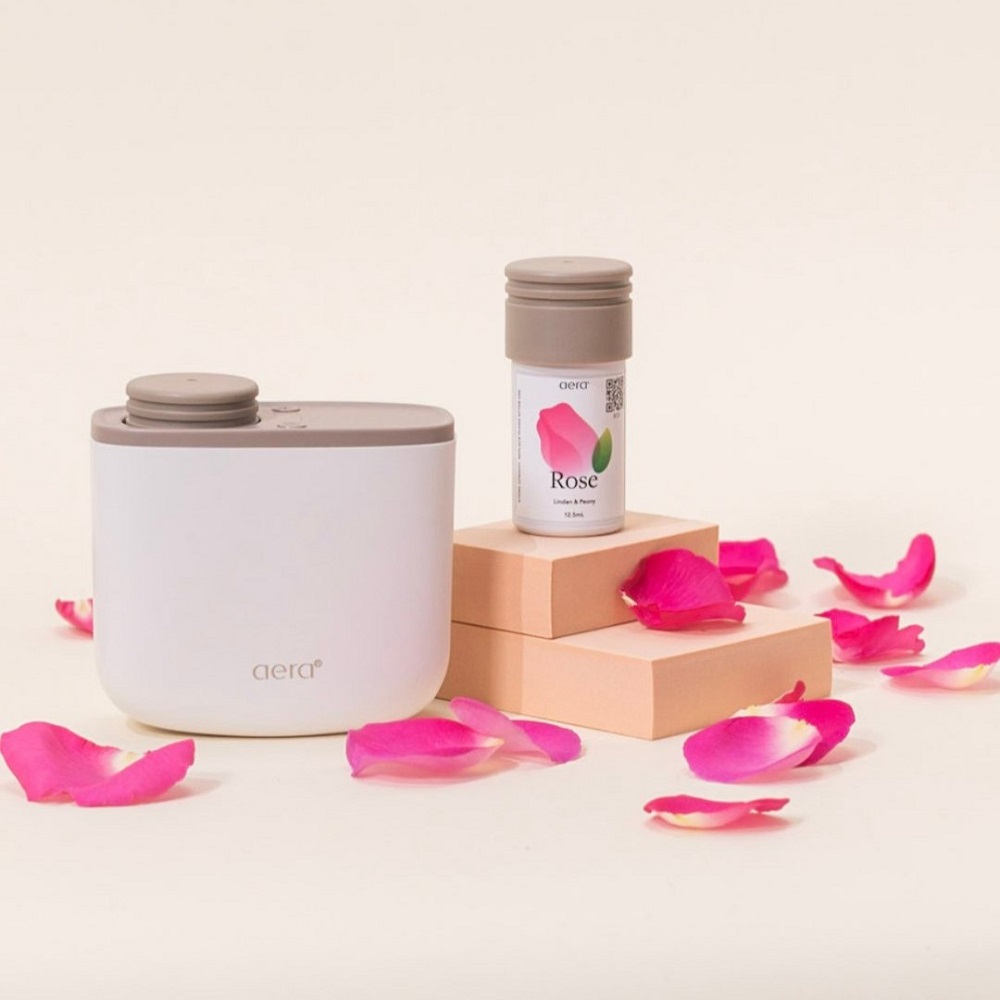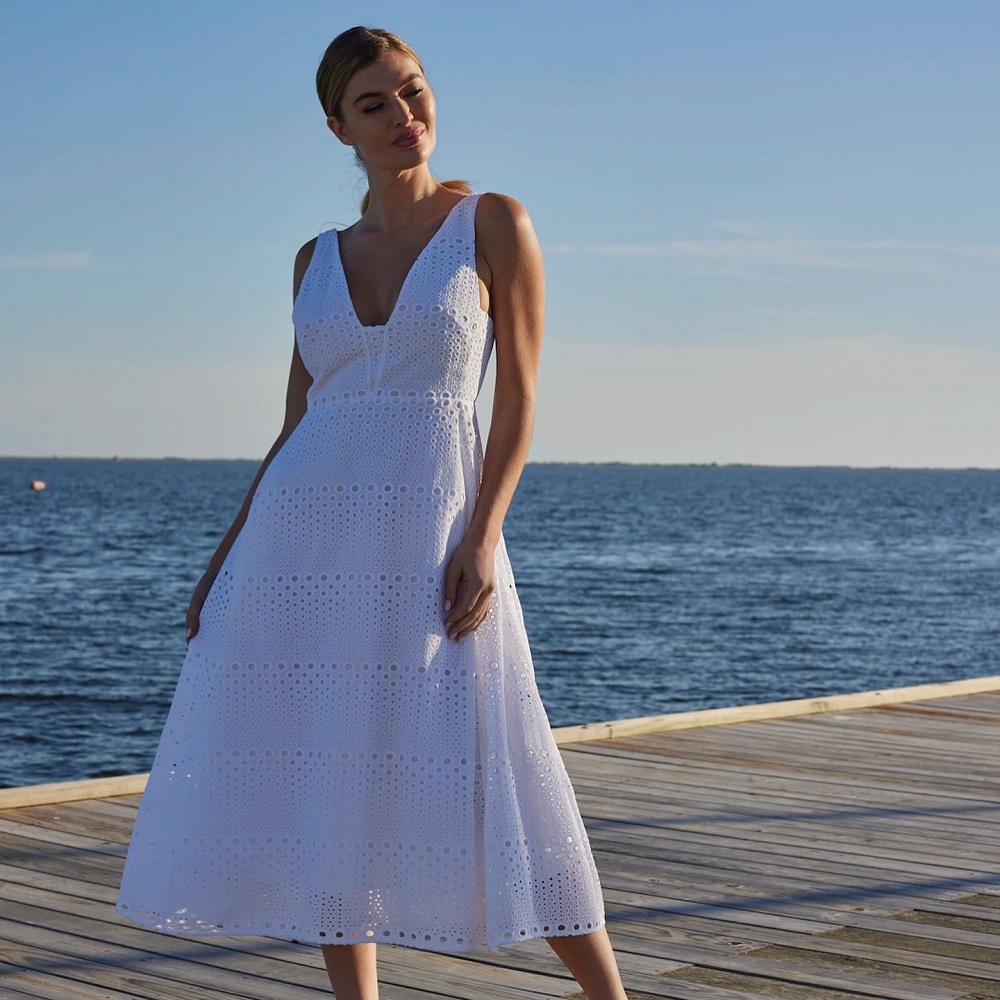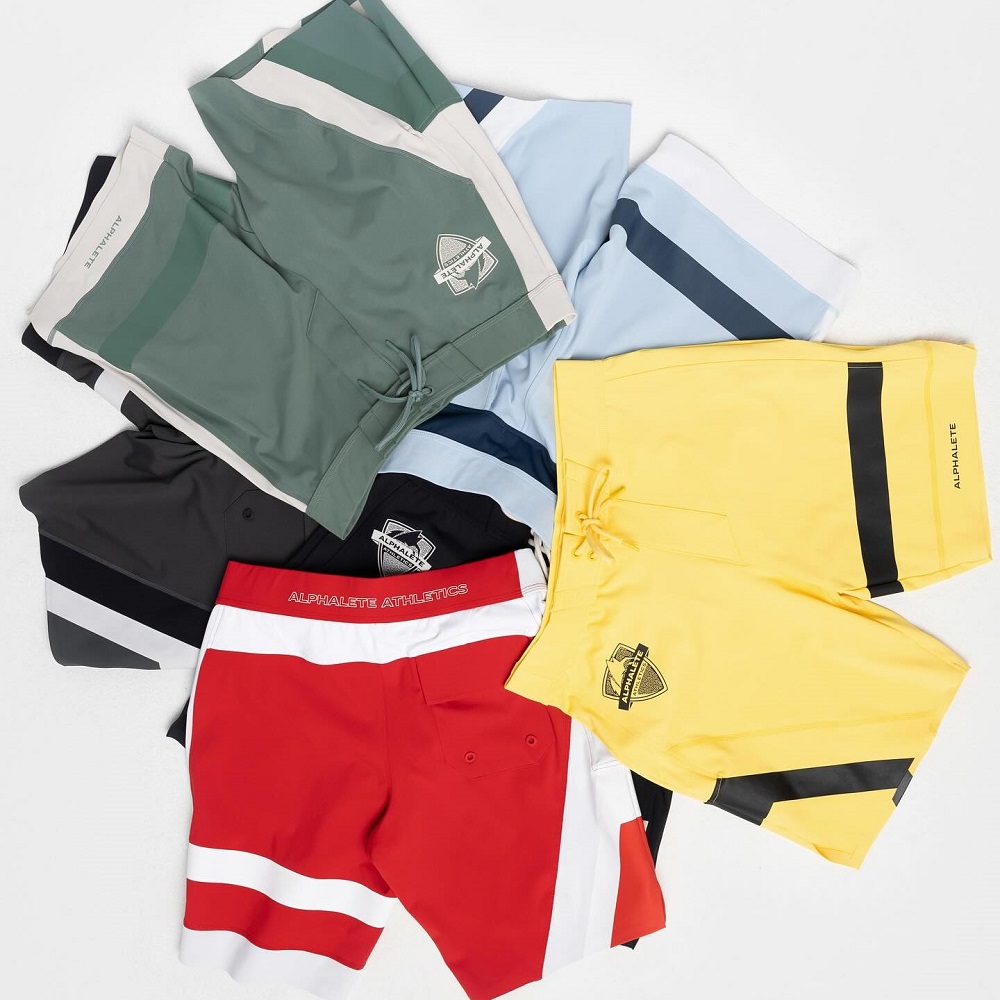Polyester vs Cotton Socks – Best Guide For 2023
Table of Contents
Why Does Sock Material Matter?

Picture this — you’ve just embarked on a carefully-planned, long and majestic hike with a friend. You haven’t even reached the first mile marker yet and you can already feel sweat pooling around your toes and the beginnings of a blister emerging. While your friend is enjoying the fresh air and beautiful scenery, you can’t focus on anything other than your feet and general discomfort. At this point in time, you realize you should have put more stock into the age old debate of polyester vs cotton socks.
This is why sock material matters. Wearing the right sock in specific circumstances means the difference between having the time of your life or spending the next few days nursing tender feet. Often an underrated piece of clothing, the sock is one of the most important things we put on in the morning. Choosing the wrong sock on any given day can prove uncomfortable at best—disastrous at worst.
Based on the activities planned and the climate involved, a sock’s function is critical. We rely on them to keep us comfortable throughout the day. By keeping our feet dry and warm or cool, if need be. By basing our sock choices on our outfit, weather conditions, and what we’ll be doing, we’re setting ourselves up to tackle the day.
Polyester Socks
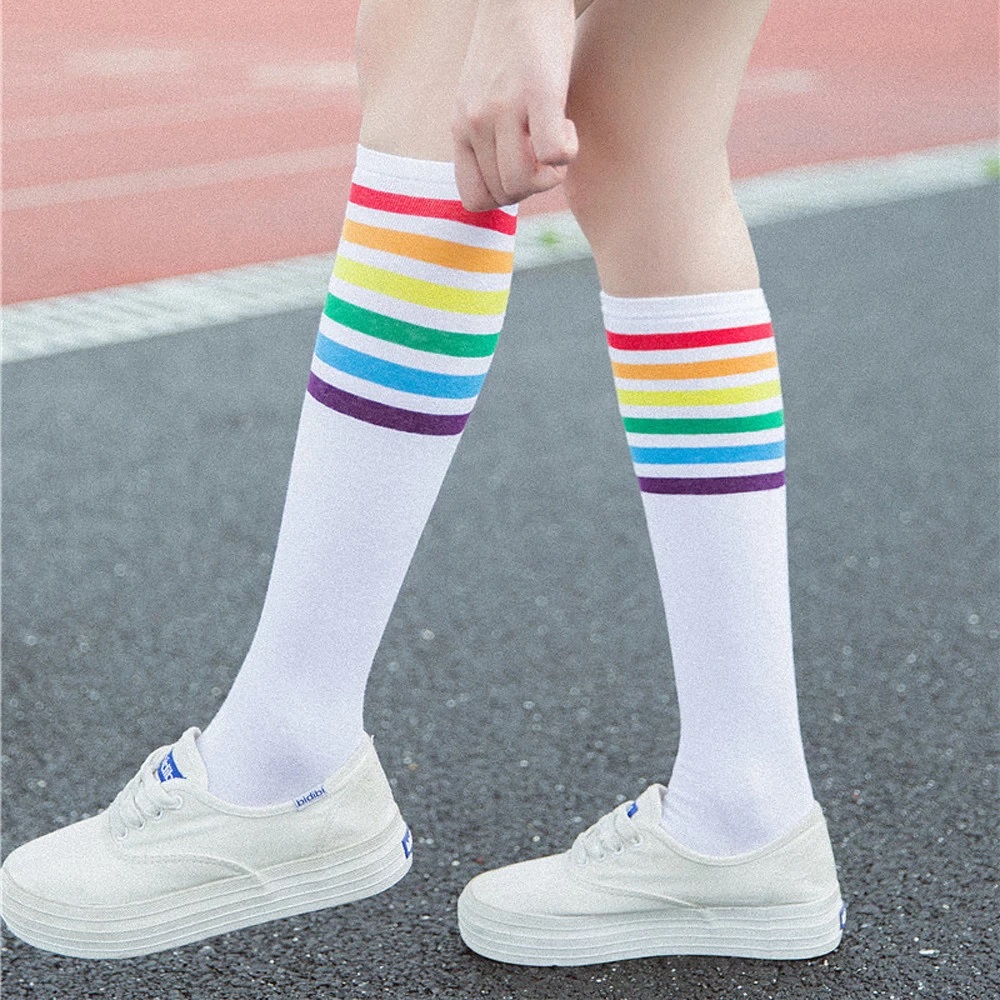
You’ll often find polyester as part of the blended materials in socks. It provides natural fabrics with additional benefits like warmth, dryness and resilience. We’re going to address the longstanding battle between polyester vs cotton socks. So let’s talk about why polyester, a synthetic material, is ideal for socks:
- Polyester is a warm and soft fabric while remaining lightweight
- It tends to be more fade resistant than natural fibers
- It’s a durable and long-lasting material
- Can be washed and dried quicker than other materials
- Socks made from polyester are generally inexpensive
Most casual socks and dress socks incorporate polyester in some combination. And because it’s a versatile material leaning toward the cheaper side, polyester socks are less likely to break the bank. They typically cost between $1 to $5 a pair.
Cotton Socks

Loyal supporters of cotton will argue that this natural, organic material is the one most often associated with socks. And they wouldn’t be wrong. It’s a logical choice for fabric in socks for these reasons:
- Cotton is compostable and environmentally friendly
- It’s lightweight and absorbent making it ideal for athletics
- While cotton is a strong material, it’s usually soft
- Cotton is breathable and well suited to individuals with sensitive skin and/or allergies
- If properly cared for, it can be long lasting and vibrant in color
We may have to call a truce between polyester vs cotton in the case of athletic socks. Their combination works well together in this type of sock. While the cotton absorbs excess sweat, the polyester is moisture-wicking and fast-drying, so they make a good team.
Most casual socks, like crew socks, are comprised of cotton and/or a cotton-blended material. Cotton socks generally cost between $10-$15 a pair.
Wool Socks
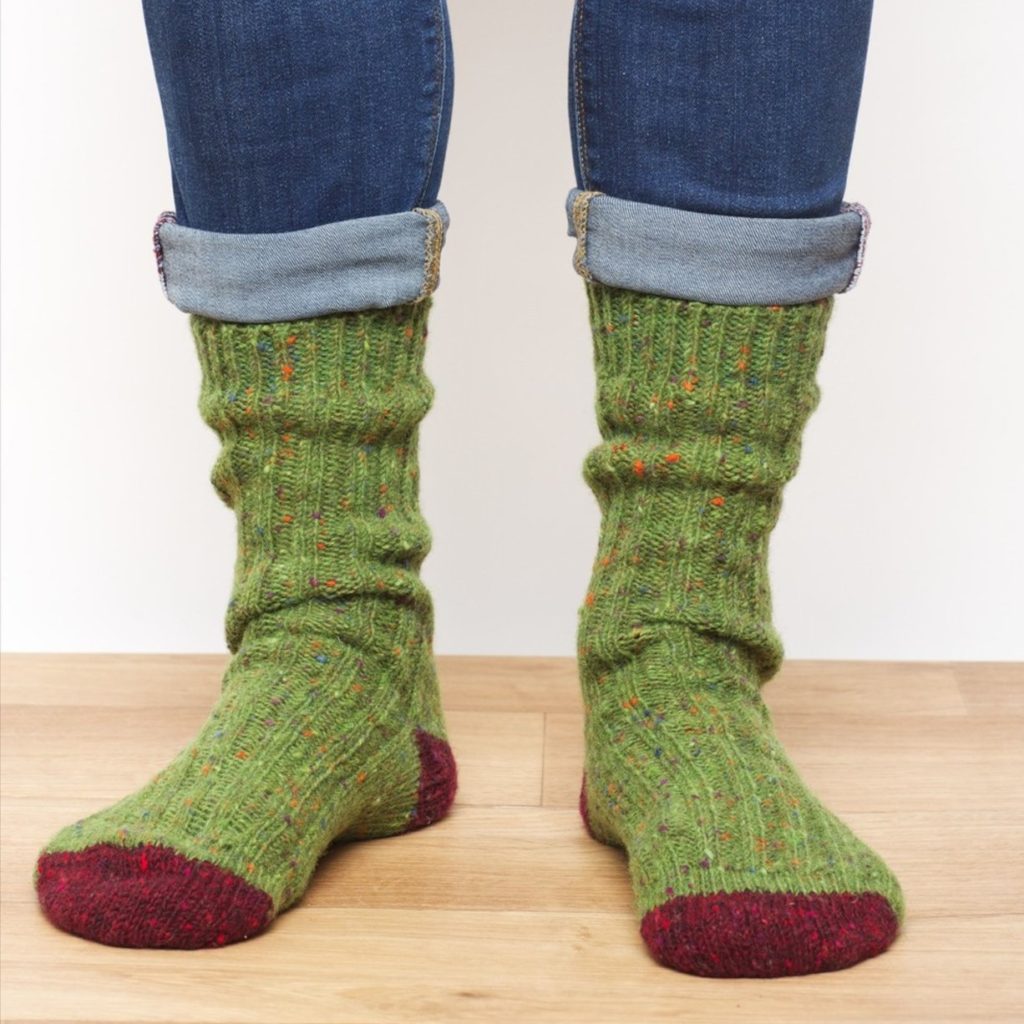
Take a quick glance at the polyester vs cotton socks debate and it seems there’s no place for wool—but there should be. When it comes to sock material, you can’t get more authentic than wool. This all-natural fabric possesses many qualities essential in a sock:
- Wool is a natural, compostable fiber
- It’s a breathable material that holds both its color and shape
- It’s said to have antibacterial properties
- Wool is excellent in providing warmth and insulation
- It can absorb up to 30% of its own weight in moisture before feeling damp (meaning it keeps feet dry)
Due to its level of warmth and absorbency, wool is an exceptional fabric used to make socks for hiking, camping and working outdoors. Depending on the type of wool used, sock prices can fluctuate but usually run between $10-$20 a pair.
Nylon Socks
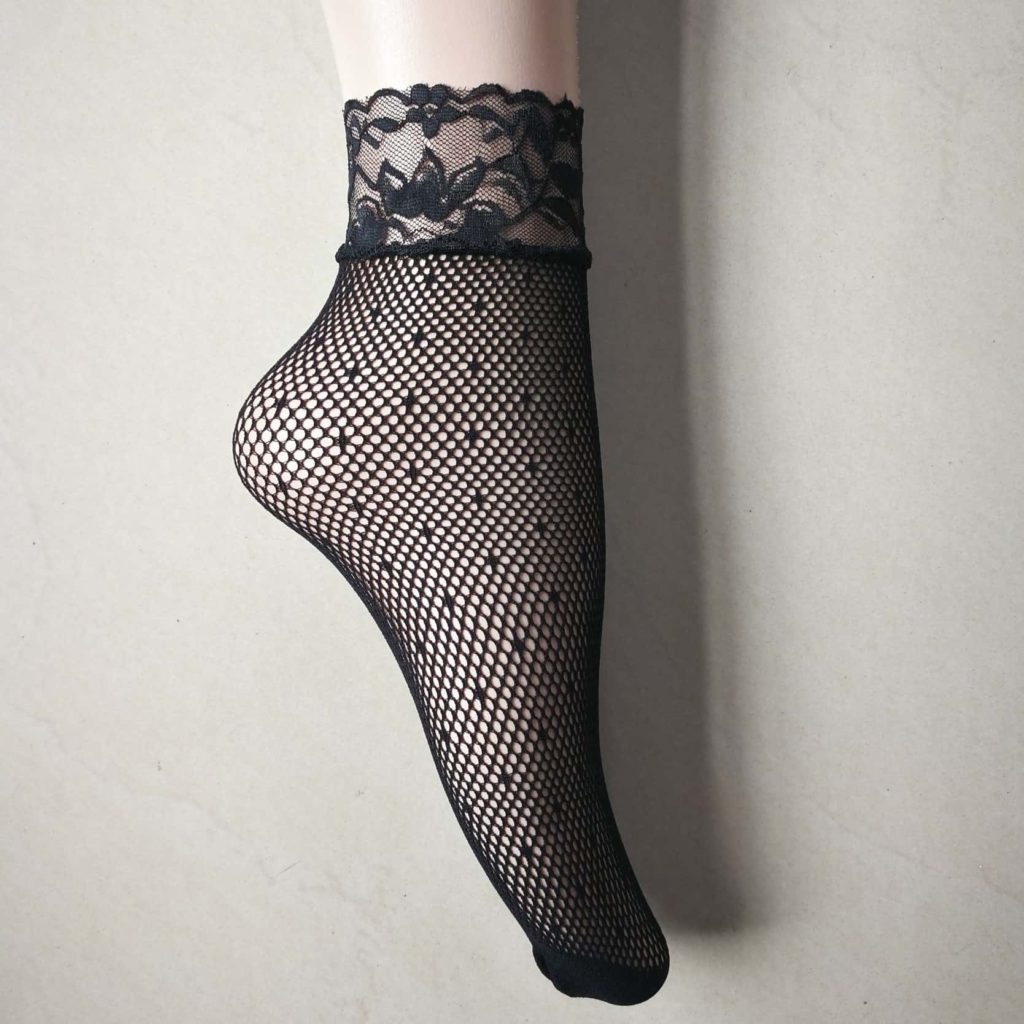
It makes sense that the majority of socks often include nylon and this is because the man-made material offers both functionality and versatility. Yet time and again, nylon is the neglected cousin left in the dust behind the polyester vs cotton socks dispute. Consider these undeniable pros associated with nylon:
- It is an extremely strong and durable fiber
- Nylon is a universally inexpensive fabric to manufacture
- It provides many socks with necessary elasticity and give
- Nylon is a highly adaptable material that can be thin, bulky, stretchy, silky and/or sheer as required
Many dress socks are made of nylon or a nylon-blend. Silky and/or sheer nylon socks are optimal when wearing a dress shoe. Depending on their length and quality, nylon socks normally range in price from $1-$10 a pair.
Polyester vs Cotton Socks

In terms of polyester vs cotton socks—each fabric has its unique set of pros and cons. What it comes down to is what you are looking for specifically in a sock and when you plan on wearing it. If you’re not a fan of research, that’s fine, because we do it for you:
| Polyester Socks | Cotton Socks |
| Comprised of synthetic, plastic-based fabric | Made of natural, organic material |
| Unable to break down naturally | Fully compostable and environmentally-friendly |
| Light-weight material | Light-weight material |
| May increase amount of foot perspiration and odor | Breathable, absorbent material |
| Non-absorbent material more likely to stain | Absorbency can result in dampness |
| Quick and easy to wash and dry | Cotton is prone to shrinkage if washed on a hot cycle and put in the dryer |
| Known to maintain vivid color despite repeated washings | Prone to color fading over time |
| Generally used in casual and/or dress socks | Tends to be found in most types of socks and an excellent choice for athletic wear |
| On the lower end of the price range at approximately $1-$5 per pair | More costly at around $10-$15 a pair |
Wool vs Cotton Socks

Wool and cotton socks are often considered to be the cornerstones of sock material. At the other end of the polyester vs cotton socks spectrum, both wool and cotton are natural and agriculturally-sound. This is basically all they have in common, as you’ll see:
| Wool Socks | Cotton Socks |
| Natural, organic and fully-compostable fiber | Also an environmentally-friendly fiber |
| Lauded for its warmth and insulating properties | This breathable material is associated with keeping feet cool, dry and comfortable |
| Can feel itchy and abrasive to some individuals | Well-suited for people with sensitive skin and/or allergies |
| Must ensure a proper fit to avoid bunching | Known for their soft and snug fit, cotton socks are generally stretchier |
| Prone to shrinkage if not washed often and with care | Likely to shrink if washed in hot water and machine-dried |
| An excellent choice of sock for hiking, camping and working outdoors | Cotton is the better choice for casual and athletic socks worn for running and/or exercising |
| On the pricey side at around $10-$20 per pair | Cost about $10-$15 a pair |
Nylon vs Cotton Socks

People seem to get wrapped up in the polyester vs cotton socks controversy when there appears to be just as much reason for pitting nylon vs cotton. While the versatility of nylon makes it an ideal sock material for all sorts of situations, cotton is pretty much a what-you-see-is what-you-get type of fabric.
| Nylon Socks | Cotton Socks |
| Synthetic fabric | Natural fiber |
| Versatile in quality and style—for example: nylon socks can be thin, silky, stretchy, sheer or bulky | Cotton socks are relatively limited in quality and style |
| Nylon is often used in material blends to provide additional give and to improve durability | Cotton is generally snug-fitting and durable on its own |
| Nylon socks are ideal to wear with dress shoes | Cotton socks are better-suited for wear with casual shoes and sneakers |
| Depending on style and length, price ranges from $1-$10 per pair | Approximately $10-$15 a pair |
Which Material Is Best?

Without taking any specifics into account, it appears that cotton is the proven overall winner in best sock material. Here’s why:
- Cotton socks are by far the most popular sock type on the market
- A large assortment of sock styles such as casual, dress and athletic incorporate cotton or a cotton-blend in their materials
- They are breathable, soft and snug giving them top marks in comfort
- Cotton is a proven winner in terms of being all natural and environmentally friendly
- Cotton socks are the footwear of choice for anyone suffering from sensitivities and/or allergies
- They are generally durable and long-lasting
That said, choosing the best sock fabric isn’t as straightforward as declaring an overall winner. It’s also a tad more complicated than simply comparing polyester vs cotton socks.
For starters, there are more materials to consider than just these two types, and there are many key factors to take into consideration, like:
- What type of shoe will you be wearing?
- How will you be dressed?
- Is there a specific activity you will be taking part in?
- What is the climate and/or weather like?
- Do you suffer from sensitivities and/or allergies?
- Are you likely to sweat?
- Is there a specific material you prefer over the qualities of another?
Upon answering these questions, the choice becomes clearer. But in the end, the decision ultimately falls to you—the sock wearer.





